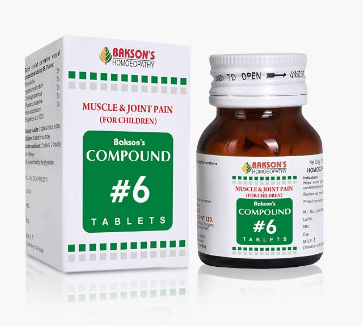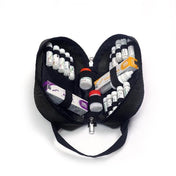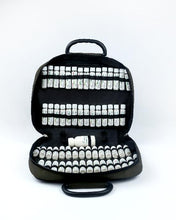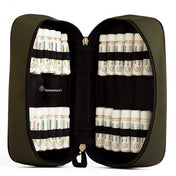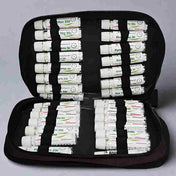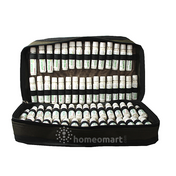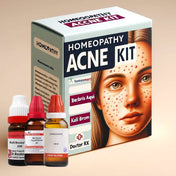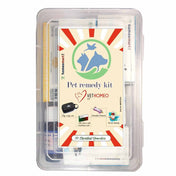Bakson Compound#6 tablets for chronic musculoskeletal pain
Bakson Compound#6 tablets for chronic musculoskeletal pain - 100 Tabs is backordered and will ship as soon as it is back in stock.
Couldn't load pickup availability
Description
Description
Homeopathy Bakson Compound#6 tablets
Chronic musculoskeletal pain in children refers to persistent pain that affects the muscles, bones, joints, tendons, ligaments, or other related structures. It can have a significant impact on a child's physical, emotional, and social well-being. There are several potential causes and conditions associated with chronic musculoskeletal pain in children:
-
Growing Pains: Some children experience intermittent pain, often described as "growing pains," as they go through growth spurts. These pains usually occur in the legs and are generally harmless.
-
Juvenile Idiopathic Arthritis (JIA): This is the most common type of arthritis in children, causing joint pain, stiffness, and swelling. It's an autoimmune condition that affects the joints and sometimes other parts of the body.
-
Hypermobility Syndrome: Children with hypermobility have joints that move beyond the normal range of motion, which can lead to joint pain, muscle strain, and fatigue.
-
Overuse Injuries: Participating in sports or activities that involve repetitive motions or excessive strain on muscles and joints can lead to chronic pain.
-
Muscle Strains and Sprains: Injuries from falls, accidents, or overexertion can lead to persistent pain if not properly treated.
-
Fibromyalgia: Though less common in children, fibromyalgia can cause widespread musculoskeletal pain, fatigue, and other symptoms.
-
Infections: Certain infections, such as Lyme disease, can lead to musculoskeletal pain in children.
-
Inflammatory Conditions: Conditions like systemic lupus erythematosus (SLE) and juvenile dermatomyositis can cause chronic musculoskeletal pain.
-
Postural Problems: Poor posture, carrying heavy backpacks, and spending too much time in front of screens can contribute to musculoskeletal pain.
-
Psychological Factors: Stress, anxiety, and emotional distress can contribute to the perception of pain or exacerbate existing pain.
-
Central Sensitization: Some children might develop a heightened sensitivity to pain, where their nervous system amplifies pain signals.
Research shows that more than 30% of school children experience chronic musculoskeletal pain. In around half of these children, the pain is due to growing pains that occur after a long day of play or an active day. Growing pains are usually relieved by rubbing or massaging the area.
Indications: Helps relieve cramping nerve pains (writer's & player's cramps), growing pains, muscular weakness, and stiffness besides soothing painful, swollen and inflamed joints.
Composition:
- Magnesium phosphoricum 3x
- Hypericum perforatum 3x
- Kali phosphoricum 3x
- Rhus toxicodendron 3x.
Mode of Action of homeopathic Ingredients:
- Magnesium phosphoricum: Mag-p. is useful for cramps, convulsions, neuralgic pains, and spasmodic effects, showing its influence on nerves and muscles. The pains are shifting, better with rest, worse at night. Pains are sometimes tense in paroxysms. Neuralgic pains are relieved by warmth. Parts are tender to pressure and numb. The pains rapidly change place, and cramping is the most characteristic type of pain.
- Hypericum perforatum: Hypericum is an excellent remedy for injury to parts, rich in sentient nerves, esp. fingers, toes, and matrix of nails. For lacerations, when the intolerable, violent, shooting, lancinating pain shows nerves are severely involved. Very painful sore parts, occiput, coccyx, etc. Pains extend towards the trunk or downsides with crawling and numbness.
- Kalium phosphoricum: This remedy is used for conditions arising from want of nerve power. There is pain with a sensation of paralysis in sensory nerves. Weakness of muscles and nerves even paralysis. Retarded nutrition, even total arrest in a limited area of cells, and then a softening. There are stitching pains. The dull, heavy ache between the shoulders. Nervous, restless, fidgety feeling in feet, trembling sensation in muscles of legs, and numb sensations.
- Rhus toxicodendron: This remedy affects the fibrous tissue, ligaments, and joints causing rheumatic symptoms. pains are tearing, shooting, stitching, worse at night, and cannot rest in any position. Parts feel sore, bruised, and stiff. Pains as if the flesh was torn loose from the bones. Sensation as if dislocated, there is crawling, numbness of parts paralyzed.
Dosage:
- Children Above 5 Years: 2 tablets thrice a day.
- 0-5 Years: 1 tablet thrice a day.
- Acute condition: 2 tablets 2 hourly for 2-4 days. Or as prescribed by the physician.
Contra-indication: None
Side effects: No known side effects
Expiry: 5 years from the date of manufacturing.
Pack size: 100 Tabs
Manufactured in India by Bakson Drugs & Pharmaceuticals Pvt. Ltd.

